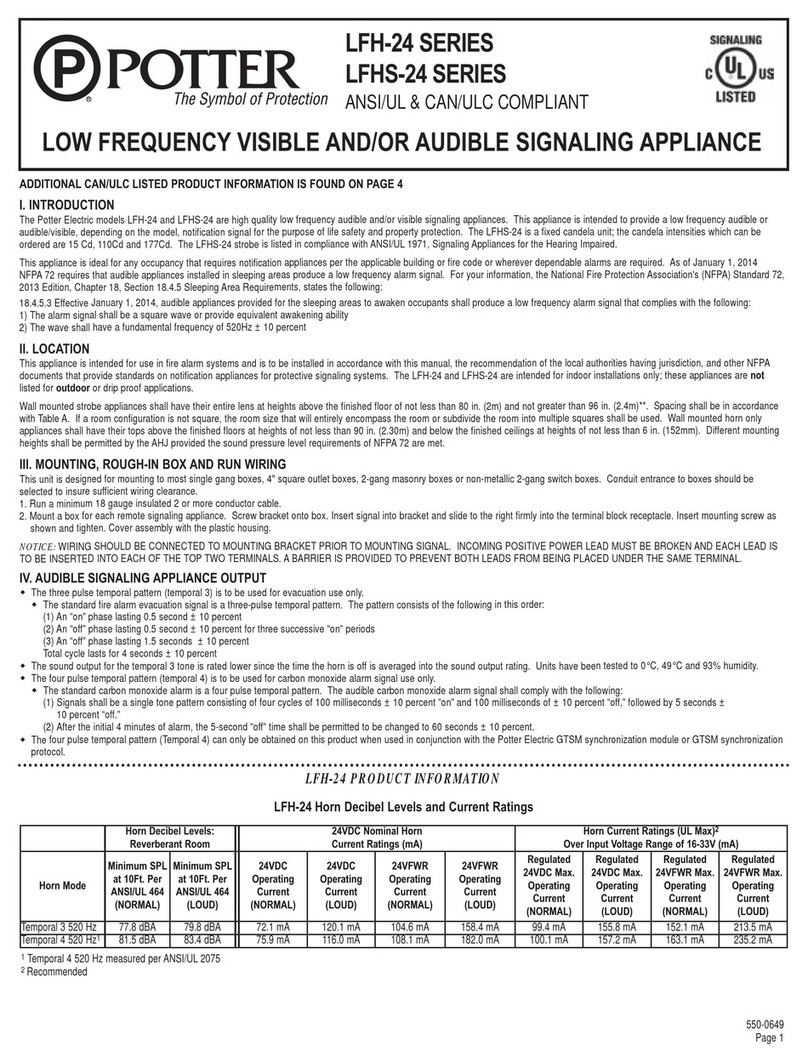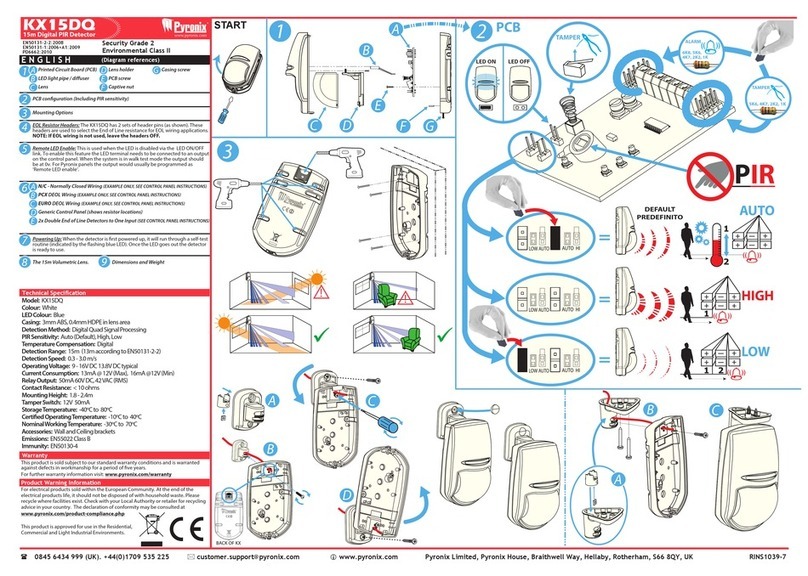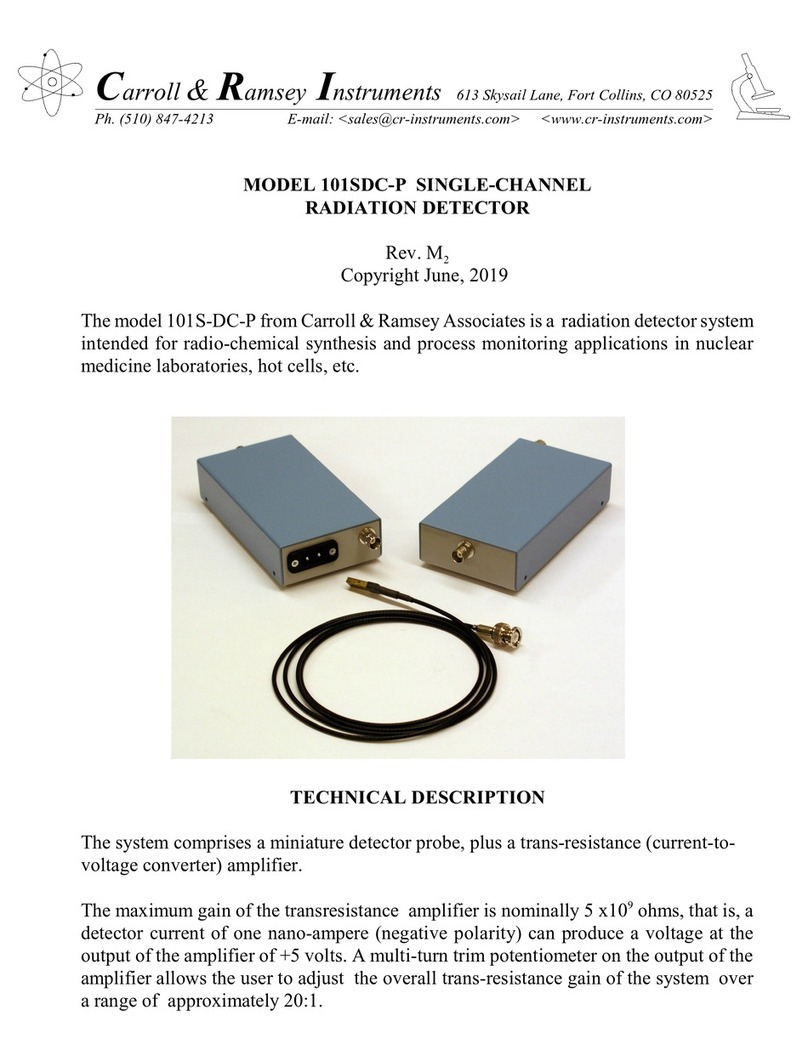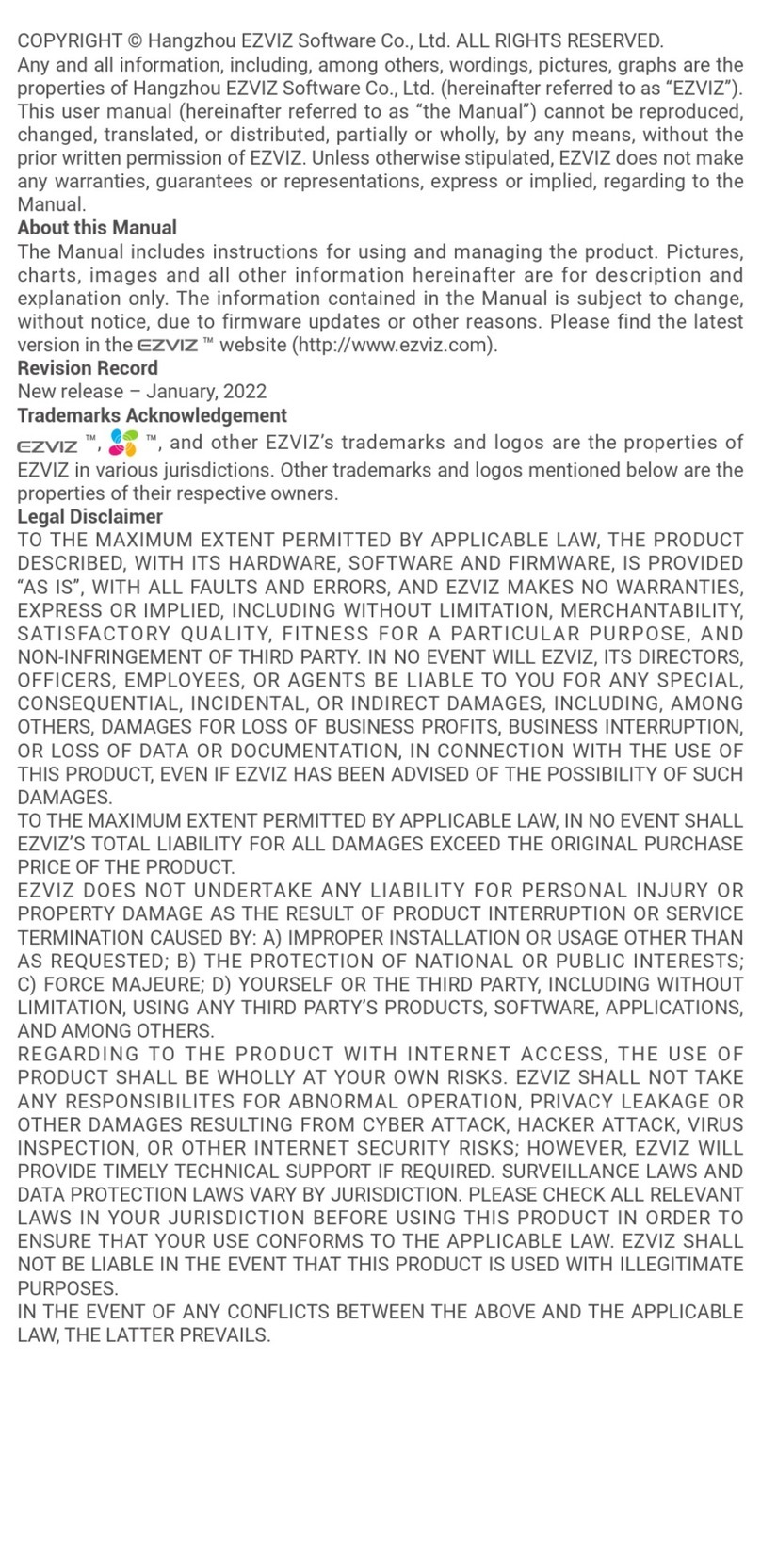Preiffer adixen ASM 380 User manual


GB 04259 - Edition 02- July 2011
1/2
ASM 380 Helium Leak Detector
Dear Customer,
You have just bought an adixen detector.
We would like to thank you and we are proud to count you among
our customers.
This product is a result of the experience acquired since many years
in vacuum and leak detection technology.
The applications of helium leak testing are extremely diversified
ranging from hit-tech installation maintenance to high-speed testing
of industrial products.
Each product of the adixen detector range is designed to meet the
specific needs of each application:
high sensitivity
pumping capacity
pumping type
mobility
while remaining simple to use, whether you are an expert or novice
in leak detection.

2/2
ASM 380 Helium Leak Detector
GB 04259 - Edition 02- July 2011
This product complies with the requirements of European Directives, listed
in the Declaration of Conformity contained in G 100 of this Manual.
Copyright/Intellectual property:
The use of adixen products are subject to copyright and
intellectual property rights in force in any jurisdiction.
All rights reserved, including copying this document in
whole or any part without prior written authorization
from adixen Vacuum Products.
Specifications and information are subject to change with-
out notice by adixen Vacuum Products.

GB 04279 - Edition 03 - June 12
1/3
General contents
ASM 380 - Operating instructions
Translated from original version
MANUAL REFERENCE: 118427
EDITION: 03 - June 2012
Software version: L0265 - v3.2 r00
Chapter A INTRODUCTION
A 100 - Presentation
A 200 - About leak detection
A300 - Options
A 400 - Accessories
A 500 - Technical characteristics
A 600 - Dimensions
Chapter B INSTALLATION
B 100 - Safety instructions
B 110 - Unpacking / Packing - Storage - Handling
B 111 - Supplies delivered with the leak detector
B 112 - Labels on/inside the leak detector
B 200 - Neutral gas purge and inlet vent connection
B 220 - Customizable rear panel
B 240 - Accessories installation
B 300 - Controlling detector
B 301 - RS 232
B 302 - 15 pin Interface
B 303 - 37 pin Input/Output interface
B 304 - USB
B 305 - Wi-Fi
B 306 - Ethernet
B 308 - Bluetooth
B 400 - Starting up / Switching off of the leak detector
Chapter C OPERATION
C 100 - Getting started with the leak detector
C 110 - Perform a test
C 200 - Control panel
C 300 - Graphic display
C 400 - Settings
C 401 - Set points Menu
C 402 - Test Menu
C 403 - Spectro Menu
C 404 - Maintenance Menu
C 405 - Configuration Menu
C 406 - Advanced Menu
C 500 - Factory configuration of the leak detector parameters
C 600 - «Setting» menus arborescence
C 700 - Remote control (accessory)
C 800 - Wireless remote control (accessory)
C 900 - Long distance sniffer probe and Helium spray gun (accessories)
Preliminary remarks Throughout this operating manual, you could find this type of
message “"Setting" menus arborescence C 600”: it refers to a
specific chapter of the operating manual. Please read it for further
information.
adixen Vacuum Products - ASM 380 Operating instructions

2/3
General contents
ASM 380 - Operating instructions
GB 04279 - Edition 03 - June 12
MANUAL REFERENCE: 118427
EDITION: 03 - June 2012
Software version: L0265 - v3.2 r00
Translated from original version
Chapter D MAINTENANCE
D 100 - Indicator lights and default display
D 200 - General troubleshooting guide
D 200 / D 300 - General troubleshooting guide / Symptoms description
D 300 - Symptoms description
Chapter E MAINTENANCE SHEETS
E 100 - Maintenance operation instructions
E 110 - Access to internal components
E 120 - Table of preventive maintenance intervals
E 141 - Leak detector tightness checking
E 142 - Leak detector depollution
E 231 - P0411 Supervisor board
E 410 - Autocalibration of the leak detector
E 411 - Calibration of a leak detector connected to a pumping group
E 412 - Calibrated leaks
E 413 - Maintenance of the internal calibrated leak
E 430 - Analyzer cell maintenance
E 437 - Analyzer cell complete dismantling
E 500 - PI3C gauge maintenance and replacement
E 530 - Valves installation and maintenance
E 532 - Depression valves installation and maintenance
E 550 - Replacement of a fan
E 555 - Replacement of the purge filter
E 600 - Remote control
E 610 - Long distance sniffer probe and Helium spray gun
E 630 - Control panel maintenance
E 640 - Replacement of the vacuum vessel
E 650 - Replacement of the wheels
E 703 - Replacement of the ACP 40 primary pump silencer or hose
E 730 - Starting of the molecular and turbomolecular pumps
Chapter F COMPONENTS
F 000 - Spare parts - Instructions of use
F 001 - adixen Customer Service Offer
F 100 - Tools
F 200 - Monitoring and display
F 300 - Power and electrical supply
F 400 - Automatic control system and electronic circuits
F 500 - Measurement
F 600 - Pumping
F 700 - Valves
F 800 - Pipes - Connections - Seals
F 900 - Cover
F 1000 - Options and accessories
F 1100 - Pictures of components
adixen Vacuum Products - ASM 380 Operating instructions

GB 04279 - Edition 03 - June 12
3/3
General contents
ASM 380 - Operating instructions
Translated from original version
MANUAL REFERENCE: 118427
EDITION: 03 - June 2012
Software version: L0265 - v3.2 r00
Indicates a potentially hazardous situation which, if not avoided, could result
in property damage.
Indicates a potentially hazardous situation which, if not avoided, could result
in moderate or minor injury. It may also be used to alert against unsafe
practices.
Indicates an imminently hazardous situation that, if not avoided, will result
in death or severe injury (extreme situations).
Indicates a potentially hazardous situation which, if not avoided, could result
in death or severe injury.
Chapter G APPENDIX
G 100 - Declaration of conformity
G 200 - Wiring diagram (Index -)
G 400 - Long distance sniffer probe user manual
G 500 - Helium spray gun manual
G 600 - Safety questionnaire
G 700 - Units
G 800 - Tools
adixen Vacuum Products - ASM 380 Operating instructions

GB 04261 - Edition 02 - May 12
1/1
Introduction
ASM 380 Operating instructions
Detailed contents
A
Preliminary remarks Throughout this operating manual, you could find this type of
message “"Setting" menus arborescence C 600”: it refers to a
specific chapter of the operating manual. Please read it for further
information.
A 100 Presentation
A 200 About leak detection
- Overview
- Vacuum circuit of a leak detector
- Test method
- Analyzer cell operating principle
- About helium and hydrogenated nitrogen
A 300 Options
- Bluetooth option
- Inputs/Outputs option
- Profibus option
- Industrial control panel
- Electronic unit / vacuum modules cables
- Sniffing kit
A 400 Accessories
- He calibrated leaks
- Calibration accessory in sniffing
- Remote control
- Sniffer probe
- Liquid sniffer probe
- Helium spray gun
- Locking clamp DN 40 KF
- Bombing chambers
- Inlet filters
- Transport case
- Transport cart
- Bottle holder
- Bluetooth
- Input/Output board
- Profibus board
- Industrial control panel
- Sniffing kit
- 2005 SI Pump
- Interface extension kit
- Power supply cords
- Measurement gauge
A 500 Technical characteristics
A 600 Dimensions
adixen Vacuum Products - ASM 380 Operating instructionsadixen Vacuum Products - ASM 380 Operating instructions

GB 04262 - Edition 03 - May 12
1/1
A 100
Presentation
The ASM 380 is the moving adixen leak detector at dry pumping,
high performance, for the maintenance of high technology
environment.
Compact and greater mobility to come closer to tested system.
Combination of high performance pumpings allowing to reduce
the test time on large volumes.
Reduced maintenance cost.
Color interface operator, swivel, 100 % customizable to meet
your needs.
Greater leak signal legibility thanks to a high performance signal
treatment.
Fully designed to simplify the operator work.
With the ASM 380, the helium leak detection has been never so
easy.
adixen Vacuum Products - ASM 380 Operating instructions

GB 04269 - Edition 05 - July 12
1/10
A 200
About leak detection
Overview Leak detection is used to detect micro-openings, porosities,
permeation through materials etc. The means of detection is a tracer
gas: Helium. This gas is so light that it can penetrate microscopic
cracks very fast.
The analyzer cell measures helium partial pressure created by
helium molecules that come from the leaking parts. These molecules
are pumped in by the vacuum pumps of the helium leak detector
and end up inside the analyzer cell. This partial helium pressure is
converted into a flow rate. The analyzer cell is tuned to detect three
gas species, hydrogen (M2), helium isotope (M3) and helium (M4).
For more information on the operating principle, please go to the
end of this chapter.
A leak detector, according the model, can detect a leak as large as
10-2 mbar l/s down to a leak as small as 3x10-11 mbar l/s.
A leak of 10-2 mbar l/s is equivalent to a bubble of 1 cc escaping a
part every 100 seconds.
A leak of 3x10-11 mbar l/s corresponds to a bubble of 1 cc escaping a
part every 1,050 years.
As for reference, please see below for more leak rate correlations.
For the same size crack, a part will leak out helium at different rates
based on the internal helium pressure. The greater the internal
helium pressure, the higher the leak rate.
Leak testing large leaks versus leak testing tiny leaks will require
different settings, for more information, please go to chapter C.
Leak
Rate
3 . 10-11
mbar l/s
1 . 10-10
mbar l/s
1 . 10-9
mbar l/s
1 . 10-8
mbar l/s
1 . 10-7
mbar l/s
1 . 10-6
mbar l/s
1 . 10-5
mbar l/s
1 . 10-4
mbar l/s
1 . 10-3
mbar l/s
1 cc
Bubble
over time
frame
≈ 1050
years
≈ 317
years
≈ 31,7
years
≈ 3,17
years
≈ 116
days
≈ 11.6
days
≈ 1,2
days
≈ 2,7
hours
≈ 17
minutes
adixen Vacuum Products - ASM 380 Operating instructions

2/10
A 200
About leak detection
GB 04269 - Edition 05 - July 12
The general vacuum diagram of the leak detector is shown below.
A dynamic version of the vacuum diagram is available on the leak
detector display panel. Green valves indicate opened valves. Red
valves indicate closed valves.
Vacuum circuit of a
leak detector
Test Procedure:
Connect the part to be tested at the inlet of the leak detector 1,
then press the [START/Stand by] key.
When the unit is not in test mode (stand-by or roughing mode), the
helium displayed corresponds to the internal helium background of
the unit.
Roughing Mode: Valve 3opens and the primary pump evacuates
the inlet of the unit as well as the part connected to it.
When the inlet pressure 2reaches the test cross over, the
roughing valve 3closes, the exhaust valve 6opens, the test
valve 4opens. The high vacuum is then connected to the inlet
of the leak detector taking care of the gas load. The analyzer cell
8will measure any helium present. The value of the leak will be
measured and displayed on the control panel.
analyzer
cell
tested
part
8
6
secondary
pumping
exhaut
valve
7
primary
pumping
5
3
4
1
2
roughing
valve
test
valve
inlet pressure
gauge
inlet
C 200
General vacuum
circuit of a leak
detector
Example:
ASM 380
Vacuum circuit
adixen Vacuum Products - ASM 380 Operating instructions

GB 04269 - Edition 05 - July 12
3/10
A 200
About leak detection
Test method
Choice Several test methods are possible.
The testing method is selected according to the test part and the
measurement range required:
The part can be
connected to an
evacuation line The part is sealed
BOMBING method
The sensitivity is limited by the
internal dead volume of the part as
well as on the bombing time and
the pressurization value. Global
test without possible location of
the leak.
SPRAY method
Leak rate measurement from
5 · 10-12 to 10-1 mbar l/s and
possibility of locating the leak.
SNIFFING method
Minimum detectable leak of
10-7 mbar l/s and possibility of
locating the leak.
Its characteristics
allow it to
be evacuated
Its characteristics
allow it to be
pressurized with helium
or a mixture containing
helium
Its characteristics
allow it to be placed
in a vacuum
vessel
yes
yes yes yes
no
no
Hard Vacuum test
Hard Vacuum test Sniffi ng test
C 402
adixen Vacuum Products - ASM 380 Operating instructions

4/10
A 200
About leak detection
GB 04269 - Edition 05 - July 12
The part is placed under a
cover, into which helium is
injected.
The leak cannot be located.
Potential leaking areas are
sprayed with helium.
The leak can be located.
Global test
He
He
START
STAND-BY
START
STAND-BY
part
spray probe
Spray test
Spray method
Response time
When spraying starts, the leak signal is not displayed instantaneously
on the analyzer cell:
there is a response time which depends on the volume V being
tested and the helium pumping speed S of the system at the opening
of the part, according to the following relation:
T = V/S (T in second, V in litre, S in l/s)
T is the time required for the signal to reach 63 % of the final value.
The detector measures the flow of helium penetrating the part.
Connection rules: refer to B 300
This involves removing air from the part tested, connecting it to the
analyzer cell and then spraying helium over the outer surface.
or
part
detector detector
adixen Vacuum Products - ASM 380 Operating instructions

GB 04269 - Edition 05 - July 12
5/10
A 200
About leak detection
or
The sniffer probe is moved
over areas likely to contain
leaks.
The leak can be located.
The signal supplied by the
analyzer is not a exact
measurement of the leak.
The sniffer probe only samples
part of the helium escaping
from the part. The sample
depends on the distance
separating the leak from the
tip of the probe.
The part is placed under a
cover containing a sniffer
probe.
The leak cannot be located.
The helium from the leak
accumulates over time inside
the cover. The detector
measures the concentration of
helium.
Global test Local sniffing test
Sniffing method The test part is pressurized with helium. The detector, via a sniffer
probe samples the helium escaping from the part.
Global test is generally kept for gross leaks (> 10-3 mbar l/s). In 90 %
of uses, the sniffing method is used in local.
He
START
STAND-BY
part
Sniffer probe
detector
He
START
STAND-BY
part detector
Spray probe
adixen Vacuum Products - ASM 380 Operating instructions

6/10
A 200
About leak detection
GB 04269 - Edition 05 - July 12
The part is placed in a chamber containing pressurized helium.
The helium penetrates the part if it has a leak.
The part is then removed from the chamber and placed in another
vacuum chamber which is connected to the detector. The helium
escapes from the part through the leak and produces a signal.
This signal is not a direct measurement of the leak as the helium
pressure inside the part is difficult to determine. Several parts play an
important part such as: the pressurization time, the helium bombing
pressure, the internal volume, the aeration time, the size of the leak.
Please consult us for details about this method.
Bombing method This method is used for sealed objects that cannot be connected
directly to the detector (semiconductors, waterproof watches, etc.).
He
He
START
STAND-BY
part part
Chamber 1 Chamber 2 detector
adixen Vacuum Products - ASM 380 Operating instructions

GB 04269 - Edition 05 - July 12
7/10
A 200
About leak detection
Analyzer cell
operating principle
The analyzer cell works on the principle of mass spectrometry and is
set by default to the mass of helium (m/e = 4). Other gasses can be
used (helium 3 or hydrogen).
m/e = atomic mass of the particle/number of electrons lost on
ionization.
The principle of magnetic deflection spectrometry is as follows.
The molecules of the gas being analyzed pass into an ionization
chamber 4 where they are bombarded by an electron beam
generated by a heated iridium filament 5. A large number of the
molecules are transformed into ions.
6
He
2.5V
3 A
He
He
He
He
Stabilized power supply
Amplifier
He Leak Signal
4
5
1
"Heavy" ions
Electrons beam
"Light" ions
Helium ions
2
3
TARGET
+ 140 V adjustable
1 Triode electrode
2 Diaphragm
3 Braking electrode
4 Ionization chamber
5 Iridium filament
6 Spare filament
Magnetic field
Description
adixen Vacuum Products - ASM 380 Operating instructions

8/10
A 200
About leak detection
GB 04269 - Edition 05 - July 12
The iridium filament allows a good performance at high pressures
and a small overheating.
These ionized particles are accelerated by an electrical field.
They arrive in a zone subjected to a magnetic field which has the
property of deflecting the trajectories of the ions along different
curves according to the masses of those ions (to be more preceded,
according to their m/e ratios). Thus the ions beam, which contained
ions with different masses, is divided into several beams, each
containing only ions with the same m/e ratio. For example, the
helium ions (m/e = 4) are separated from the lighter (H2+ or H1+,
smaller beams) or heavier ions (N2+ or O2+, bigger beam).
The triode electrode 1collects the ions which the mass is higher than
the tracer gas mass. The electronic current measured in this way
allows to calculate the total pressure in the analyzer cell.
Because there is a constant magnetic field (permanent magnet),
the accelerator electrical field is adjusted so that the tracer gas ions
follow a pre-determined trajectory (passing through diaphragm 2)
and arrive on the target at the input to a direct current amplifier.
In order to separate the helium ions from "noise" caused by other
ions, an electrode located in front of the target eliminates them. This
electrode 3is called the "braking electrode".
The current of ions of the tracer gas is proportional to the partial
pressure this one in the installation and by measuring it we can find
the flow rate of the leak that has been detected.
It is essential that the total pressure in the analyzer cell is less than
10-3 mbar so that the trajectories of the electrons and the ions are
not disturbed by residual molecules.
There is a spare iridium filament 6in the analyzer cell.
adixen Vacuum Products - ASM 380 Operating instructions

GB 04269 - Edition 05 - July 12
9/10
A 200
About leak detection
Helium is the second most common element in the universe,
representing about 23 % of the total matter. 76 % is Hydrogen.
All other elements represent an insignificantly small fraction of the
total.
Helium is a 100 % green gas and has absolutely no environmental
impact on the atmosphere.
Helium was discovered by spectroscopy in a solar eclipse on August
18, 1868. The discovery in the sun’s chromosphere gave the new
element its name: “helios” in Greek means “sun”. While Helium is
very common in the universe most of it is in the stars: on earth it
is actually not abundant. Since it is so light all the Helium present
during the formation of earth escaped to space.
Helium is created deep in the earth from the radioactive decay of
uranium and thorium which also gives the earth its internal heat.
On earth Helium was discovered in 1881 by spectroscopy of Mount
Vesuvio in Italy – the volcanic gases emanated by the mountain
showed the same lines in the spectrum as already known from the
sun.
Helium concentration in the atmosphere is 5 times bigger than
the one of Krypton and 60 times higher than Xenon. The heavier
noble gases are isolated from air rectification. In contrary, Helium
is “mined” from natural gas and oil wells and stored. The annual
world wide production is ca. 3x107m3or 4,500 tons.
Helium is constantly seeping up from the ground all around us, but
it is so light that almost all of it escapes into space fairly rapidly. On
the other hand there is a constant flow of Helium from space and
the sun to earth. This gives a dynamic equilibrium and is the reason
for the world wide constant concentration of 5 ppm Helium in air.
Helium is a very light colorless element and it is one of the six noble
gases which means it doesn’t react with anything for all practical
intents and purposes. It’s the most difficult gas to liquefy.
It’s used as an inert shield gas to protect things from oxidation – and
of course as leak detection tracer gas.
Helium is commercialized in many different purity levels, the highest
level of purity is requested from some laboratories for fundamental
researches or very accurate analyses.
The use of the Helium as a tracer gas into a mass spectrometer
doesn’t require such attention. A purity in the range of 97 % to
99 % is enough.
There is absolutely no risk of accuracy lost or contamination for the
analyzer cell by using standard purity level of Helium gas.
About helium and
hydrogenated
nitrogen
Helium
Helium and leak detection:
which purity?
adixen Vacuum Products - ASM 380 Operating instructions

10/10
A 200
About leak detection
GB 04269 - Edition 05 - July 12
Hydrogenated nitrogen If Hydrogen (H2) and Oxygen (O2) are mixed and heated, they react
and create water vapor (H2O). During this process more heat is
generated which may (if the concentration is high enough) ignite
the surrounding gas. If this process propagates, the gas explodes.
At low concentration of Hydrogen (< 4 % in air) the generated heat
is not enough to ignite the surrounding gas.
At concentrations in the range 4 to 12 % the combustion may
spread only if actions are taken to prevent the generated heat
from dissipating. It is a common misconception that hydrogen will
explode as soon as the concentration exceeds 4 %. It may explode
only if conditions are favorable for spontaneous propagation of
combustion.
Never use pure hydrogen or a mixture with a hydrogen concentration
higher than 10 % to realize a "hydrogen" test as tracer gas.
If you use the recommended tracer gas of 5 % H2/ 95 % N2and
mix it with air there will either be too little hydrogen or too little
oxygen to constitute a combustible gas mixture. Hence this gas
mixture is classified as non flammable. The actual limit is 5.7 %.
The mixture 10 % H2/ 90 % N2is commonly used in the industry
because it is flammable only under certain conditions. This mixture
is however classified according to ISO 10156 as Flammable Gas and
should only be used after due safety considerations and approvals.
adixen Vacuum Products - ASM 380 Operating instructions

GB 04274 - Edition 03 - June 12
1/4
A 300
Options
Which options for
which model? ASM 310 ASM 380 ASI 30
Bluetooth (*) 1ss
37 pin Input/Output board (*)
2ss
37 pin Input/Output board with Bluetooth (*)
37 pin Input/Output board with Wi-Fi (*)
37 pin Input/Output board with Ethernet (*)
Profibus board (*)
3s
Profibus board with Bluetooth (*)
Industrial control panel (*) 4s
Electronic unit/vacuum module cables (*) 5s
Sniffing kit (*) 6s
(*) Also available in accessories
adixen Vacuum Products - ASM 380 Operating instructions
Popular Security Sensor manuals by other brands
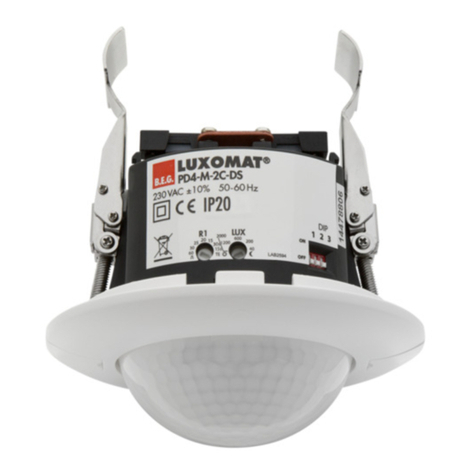
B.E.G.
B.E.G. LUXOMAT PD4-M-2C-DS Installation and operating instruction
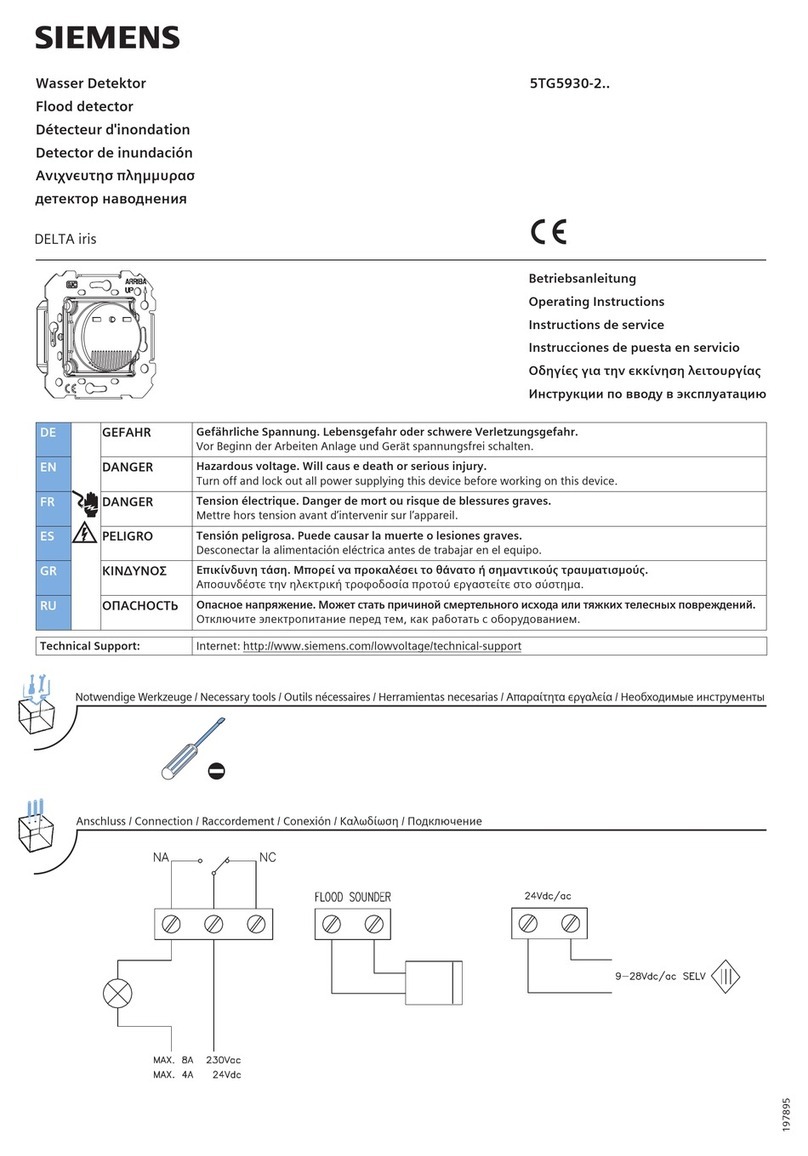
Siemens
Siemens DELTA iris 5TG5930-2 Series operating instructions
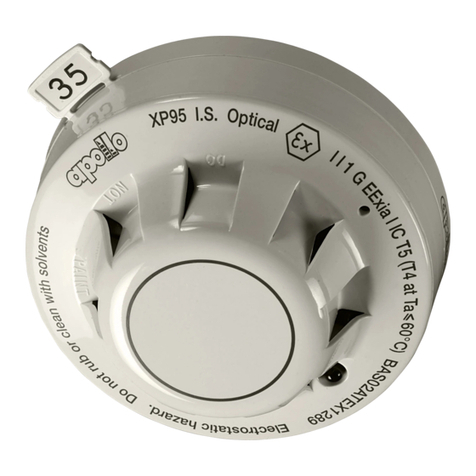
Apollo
Apollo Smoke Detector XP95 installation guide
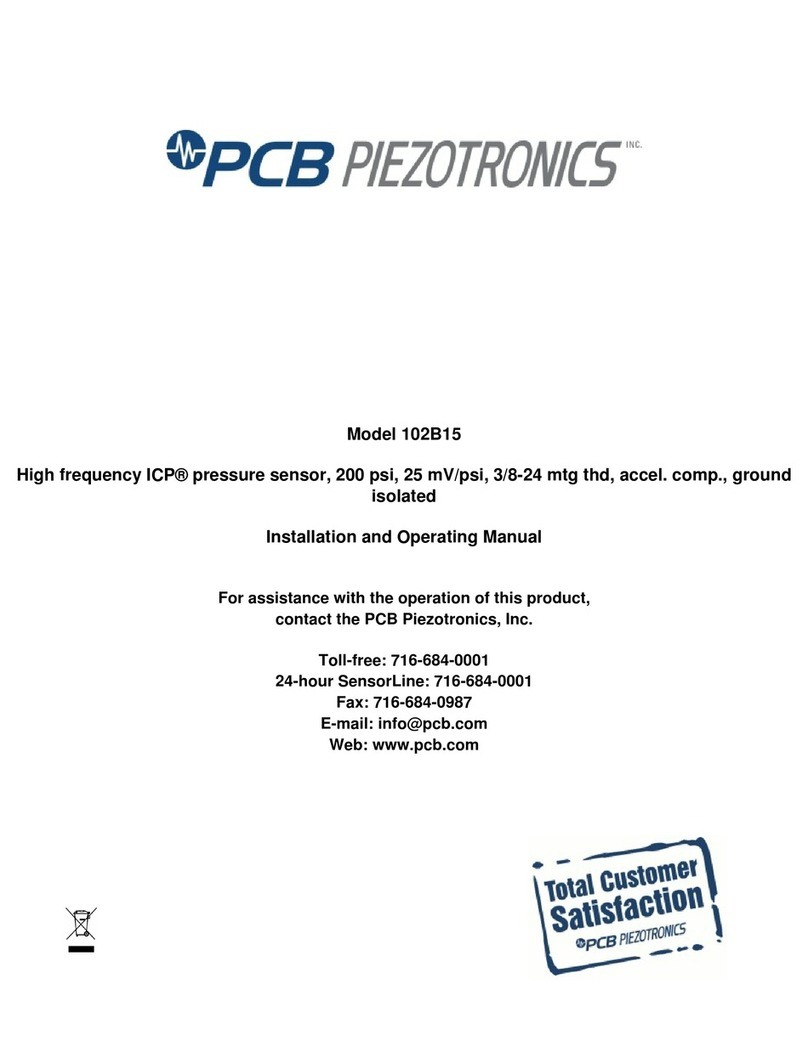
PCB Piezotronics
PCB Piezotronics ICP 102B15 Installation and operating manual
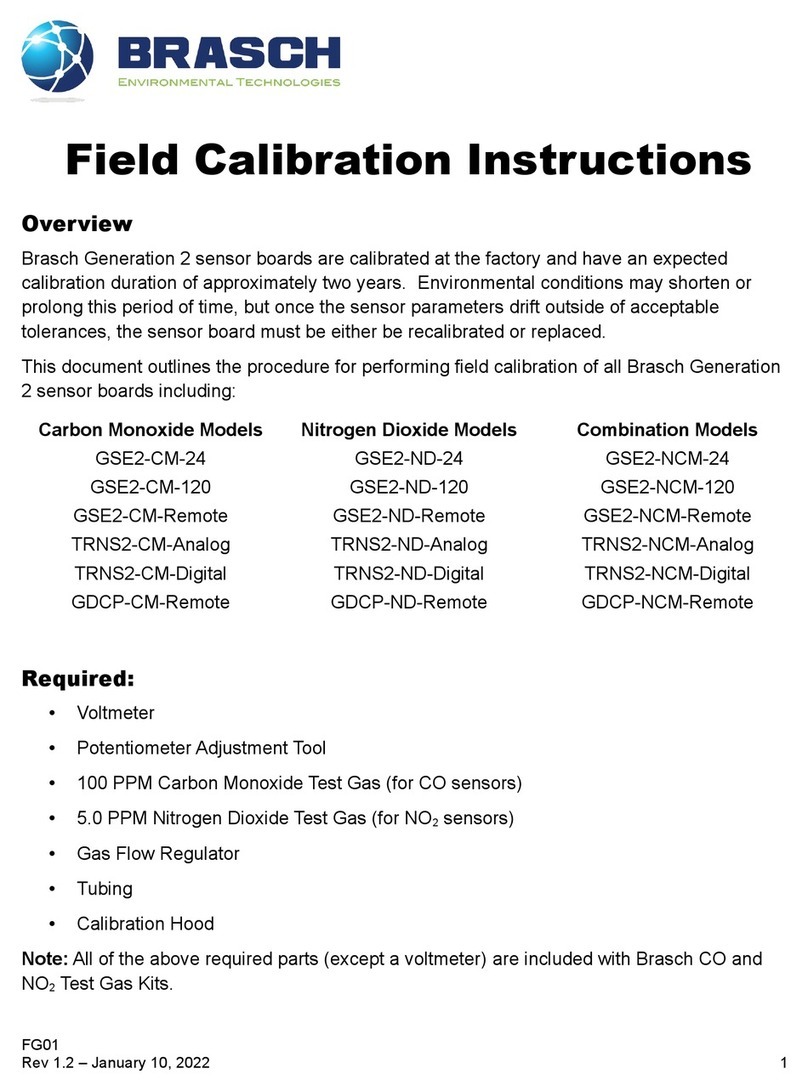
Brasch
Brasch GSE2-CM-24 instructions
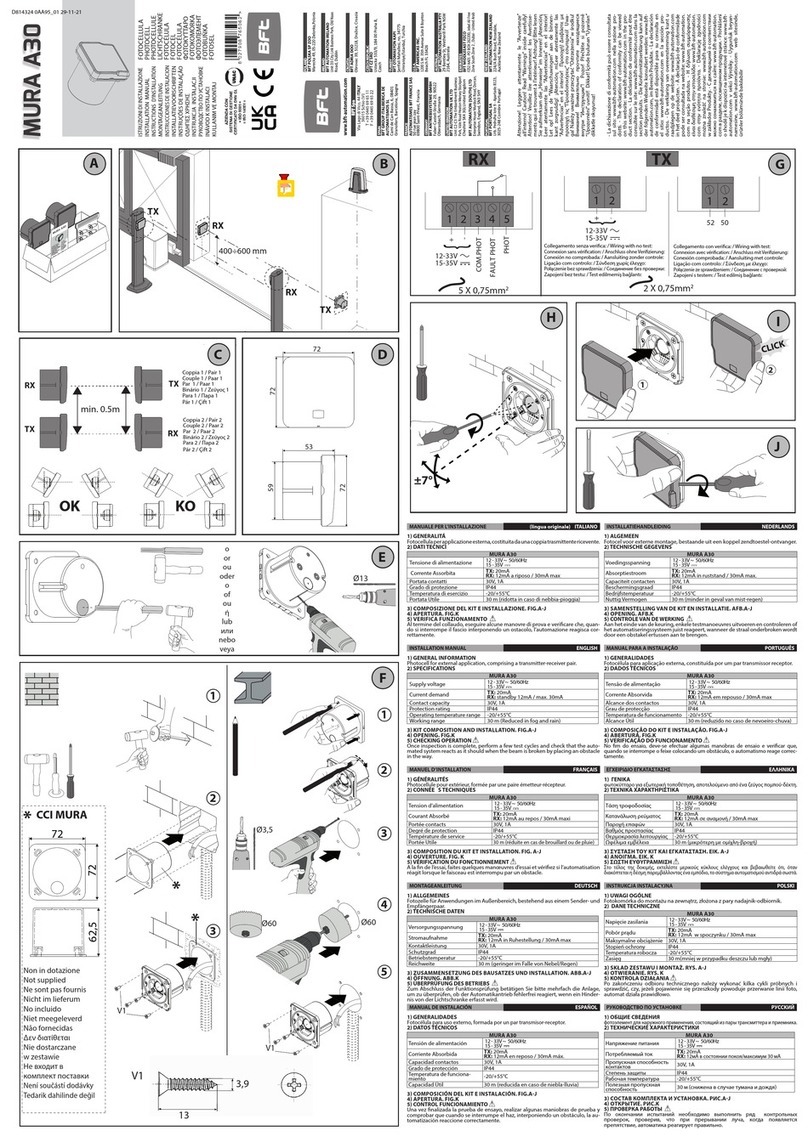
BFC
BFC MURA A30 Accessory Installation Manual
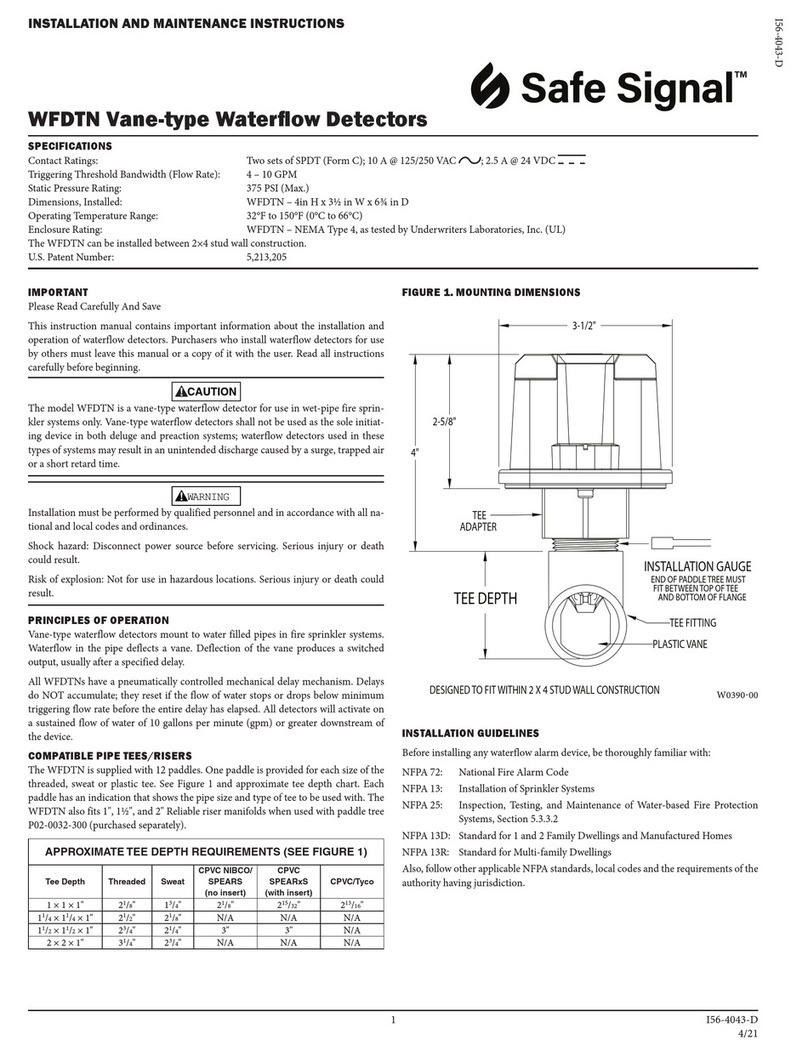
Safe Signal
Safe Signal WFDTN Installation and maintenance instructions

Satel
Satel ASD-110 manual
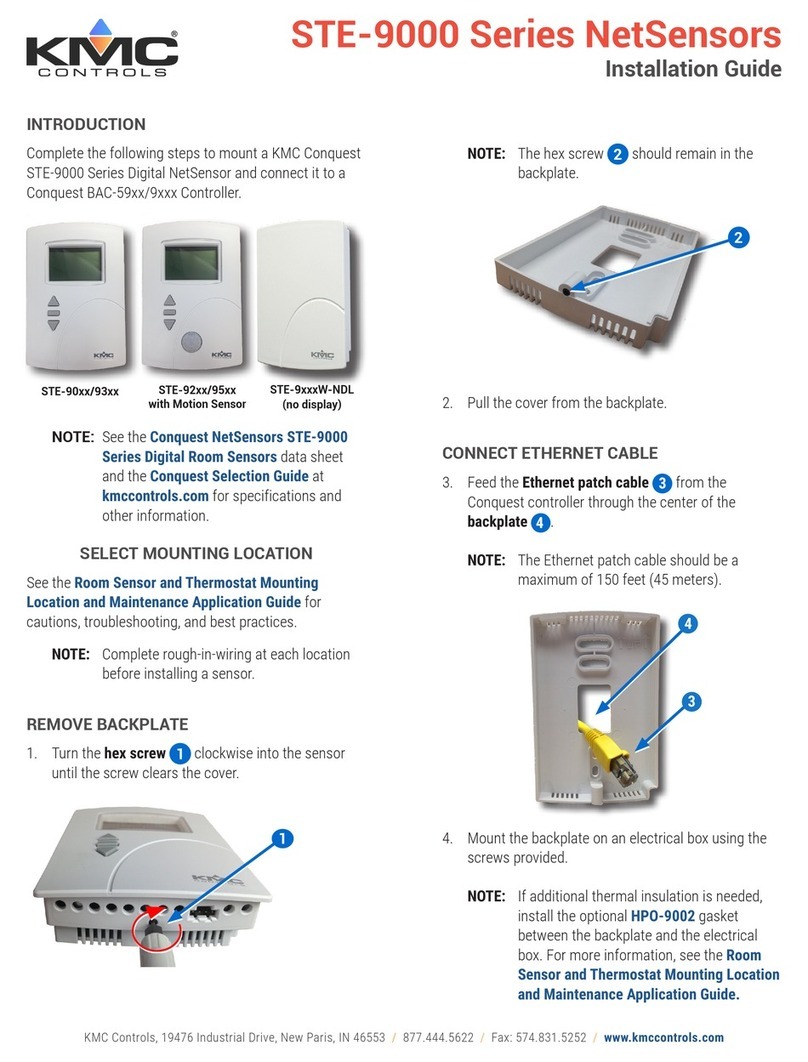
KMC Controls
KMC Controls STE-9000 Series installation guide

B.E.G.
B.E.G. LUXOMAT PD4-M-TRIO-2DALI DSI-1C Installing and operating instructions
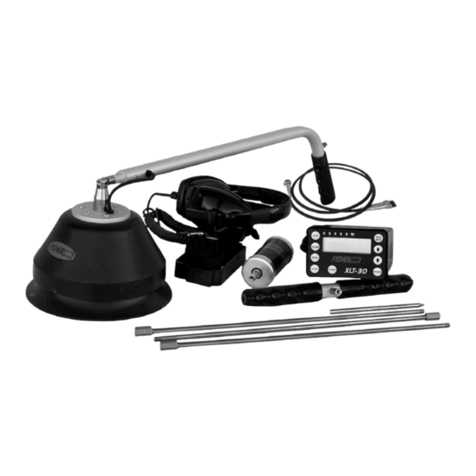
Fisher Labs
Fisher Labs XLT-30 operating manual
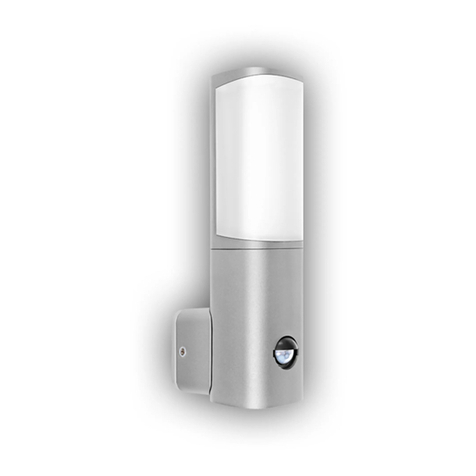
GEV
GEV NATALIA 10888 manual

